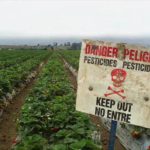 When the media got all kerfluffled about the functional extinction of wild oysters about a month ago, I asked Chris Len to write a guest post about the dirty, dirty truth. Chris is the staff attorney for NY/NJ Baykeeper and Hackensack Riverkeeper. Like a Combo snack, he is two delicious salty things in one not-so-bite-sized package – an environmental lawyer who also has a masters degree in marine environmental policy from the University of Miami. Chris assures me that when he’s not actively defaming the water quality of the Hudson-Raritan Estuary, he spends his time keeping it real.
When the media got all kerfluffled about the functional extinction of wild oysters about a month ago, I asked Chris Len to write a guest post about the dirty, dirty truth. Chris is the staff attorney for NY/NJ Baykeeper and Hackensack Riverkeeper. Like a Combo snack, he is two delicious salty things in one not-so-bite-sized package – an environmental lawyer who also has a masters degree in marine environmental policy from the University of Miami. Chris assures me that when he’s not actively defaming the water quality of the Hudson-Raritan Estuary, he spends his time keeping it real.
——————————————————————-
If you’re like me – which given that you’re reading a marine science blog, I assume you are[1] – you’ve noticed that the world seems about to end. It seems, sometime in the past couple of weeks, perhaps as a result of socialist plotting, all the wild oysters up and died. If only we had seen this coming! But, like the financial crisis, no one could have seen it coming. It was invisible, just like so many crises before it – global warming, Y2K, Steven Tyler.
But still, you have to admire the diligence of the nation’s press. The oyster decline is a hidden epidemic, hard to notice. Thanks to their unerring instinct, the national press arrived at the scene of the crime a scant 100 years after wild oysters became functionally extinct in the waters surrounding in the media capital of the world.
Oysters had been the cornerstone of the marine environment in New York Harbor for millennia. When Hendry Hudson first sailed into the harbor, oyster reefs covered 350 square miles of the estuary. In the coming centuries, oysters supported a vibrant economy – oyster wagons were the spiritual predecessor of the omnipresent hotdog cart. Commercial harvest of oysters began in the 1600s; by the early 1800s, Raritan Bay oyster populations had already crashed. Out of town oysters were brought in to reseed the beds and in the 19th century, New York Harbor was the largest producer of oysters in the world.
Yet, as the 20th century dawned, oysters were already in serious decline. New Yorkers’ insatiable demand for septic services led to widespread contamination of the harbor with the euphemistically named “particulate matter” – no sweat for the oysters: they eat that shit up! Greater pressure on oyster health came from overfishing and toxic pollution. Oysters are filter feeders, and they welcome a little particulate matter in the diet[2], but hydrocarbons and organic chlorides are another matter. So are industrial fishing practices. By World War I, it’s fair to say that the New York Harbor Oyster was ecologically extinct.
The demise of wild oysters has been covered as a gastronomic apocalypse, but the impact of oyster collapse is far more severe for ecological heath than it is for the sexual health of sketchy old men looking to score big with the foxes at the local fox-bar.[3] Oysters are a keystone species. For those of you non-scientists out there, please allow me to explain.[4]
Oysters create habitat.[5] They create reefs in temperate scummy waters like coral creates reefs in pristine tropical waters, and oyster reefs have ecological benefits analogous to those of coral reefs: They provide habitat and substrate, they break waves and storm surges. Like corals, oysters are filter feeders, but unlike corals, they can ply their wares even when nutrient levels are very high. If you’ve got a bay full of poop – and who doesn’t?[6] – oysters will happily turn that poop into oyster flesh.[7] They will, as fast as they can (bless their little palps!), transmogrify poop-water into Evian[8], improving water quality, lowering turbidity, granting sexual prowess to the aged and probably curing gout. Or causing it. I forget.[9]
So New York lost its oysters right when it needed them most. Losing the oysters, the city lost a natural water quality buffer, and then shit really hit the fan. Throughout the 20th century, until and beyond[10] the passage of the Clean Water Act, New York City’s waters were little better than an open sewer.
Since the Clean Water Act, New York Harbor waters have improved markedly in water quality, but they’re still a long way from the mandated Fishable/Swimmable standard. What oysters remained in the harbor – a smattering of isolated wild oysters, NY/NJ Baykeeper’s research reefs and Hackensack Riverkeeper’s test cages in the Hackensack River – are severely stressed by pollution. Oyster diseases are rampant, and Hackensack oysters in test cages suffer from shells so thin that in many cases, crabs can claw right through them. Some research shows that oysters can sequester and excrete toxic pollutants[11], but we have lots of toxic pollution in these waters.[12] The key questions addressed in Baykeeper and Riverkeeper’s research are simply, can eastern oysters live in these waters, and if so, where?
Now back to the transitive property – in addition to toxic pollution, the harbor waters are highly contaminated with pathogens. So that’s cool with the oysters, they eat ‘em. But if you are what you eat, and oysters eat poop, and so oysters are poop, when you eat oysters, you’re really just eating a giant turd sandwich.[13] As Coldplay fans can attest, eating a turd sandwich can really upset one’s stomach. Listening to Coldplay, or eating oysters from pathogenically polluted waters can cause major problems. Coldplay can make one nod off unexpectedly, or even DIE of boredom;[14] eating oysters (especially raw) from polluted waters can give one all sorts of nasty illnesses: typhoid fever, Vibrio parahemolyticus. Vibrio vulnificus, cholera, viral hepatitis, viral gastroenteritis and paralytic shellfish poisoning. So even if Baykeeper’s oyster restoration succeeded beyond all expectation, the oysters would have ecological benefits, but would be indefinitely unsafe for human consumption. Please, God, if you happen to find one of our miserable oysters in the contaminated muck of New York Harbor, let me be the first to say DO NOT EAT THE THING!!!
Now, for Hugh Hefner, the loss of wild oysters in New York Harbor is not a big deal. Like a shriveled once-ler, he can just move on to the next truffula grove. After the New York oyster industry collapsed in the teens, the Chesapeake Bay industry was destroyed by the 40s, the Delaware Bay oysters were done in the 50s, and now things are looking grim for wild oysters in the Gulf of Mexico. But even when wild oysters are no more than a distant memory, Hugh needn’t worry. Oysters are widely cultivated – albeit without the environmental benefit of reefs – and will likely never vanish from menus. The real question is whether the wild oyster will ever return as the cornerstone of a vibrant ecosystem.
[1] Brave, handsome, resolute, giving and kind. Possessed of a noble bearing, yet humble, and ready to mix easily with the baser classes.
[2] The reader is invited to consider the transitive property of equality as applied to the statement “you are what you eat.”
[3] And who’s to say they’re wrong? Rrrrrrrr!
[10] The reader is invited to compare this water quality problem in New York City to this water quality problem in Colorado.
[11] And they may give them superpowers!
[12] Berry’s Creek, which is just downstream of the Meadowlands Sports Complex, has the worst aquatic Mercury contamination in the world; The Diamond-Shamrock Superfund Site is a little ways up the Passaic River. They made Agent Orange there, famously contaminated with Dioxin, and dioxin contamination from that site has placed 27 miles of the Passaic River and Newark Bay on the Superfund list.
Share the post "Guest Post: On wild oysters, the headlines that came 100 years too late, and turning poop-water into salty Evian"






The article made me want to go grab Joseph Mitchell’s “Up in the Old Hotel.” I like you use of humor, and talking about New York. You have probably read him. A must read for your readers. New Yorker staffer, from the 40s (?)
Side note: I live in Rhode Island. Narragansett Bay has had ample trouble as well. But the small salt ponds that line the south shore of Rhode Island have really exploded with oyster spat. I’m sure the oyster farms in the ponds contributed to the “wild” set. Obviously, not wild but still I take this as good news. The last good set that I’ve seem was in the early 90s. As that set grew to market size it got hammered by eager hands–some going to market; others the kitchen table. Oysters can’t run, their foot’s not big enough. Does it even have one? Like a clam has one.
Thanks for writing.
John
It’s like reading David Foster Wallace reincarnated as an ecologist! Thanks for the laughs–despite the troubling subject.
The broken link for “score big with the foxes” can be replaced with http://www.hulu.com/watch/19591
:)
Fixed!